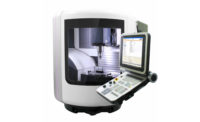With cloud-based devices becoming a more integral part of manufacturers’ personal and professional lives, the question remains: Is this influx of new technology actually improving the work-life balance? According to a new study on cloud apps in the workplace, conducted by The Blackstone Group and commissioned by the technology company Softchoice, the answer is an emphatic “yes.”
The study, titled “Tech Overload is Overblown (Cloud Apps and the Happiness Effect),” focuses on how cloud app adoption (SaaS) impacts the workplace engagement and satisfaction of 1,000 full-time employees in the United States and Canada. The results are encouraging. Seventy-four percent of SaaS app users say they’re happy, versus 19% of non-users. In addition, employees who get to choose their own apps are two times more likely to be happy at work than employees who don’t have a choice, while employees using six or more apps are two times more likely to have flexible work hours than non-users.
Francis Li, vice president of IT at Softchoice, says that the manufacturing sector in particular is compelled to ensure the quality and accuracy of their products, while also “finding ways to make processes faster, more efficient, and more cost effective.”
“Sixty-seven percent of manufacturing employees report using up to five cloud applications for work, higher than all other major sectors polled,” Li continues. “This is largely due to the fact that cloud solutions are much easier to customize to each department and customers? needs, and allows for easier integration with manufacturers’ ERP and supplier management systems, further allowing manufacturers to capture richer data and use it to further refine processes.”
Embracing the Cloud
Jason Prater, vice president of development at Plex Systems, also believes that embracing the cloud is paramount. Plex is a manufacturing software company that provides an online ERP solution. Plex also runs on a single line of code, so that the software is continually innovating and thus allowing customers to immediately access new features and capabilities.
“It is not surprising that manufacturing is the one of the leading industries to adopt cloud technologies,” says Prater. “Manufacturers have an inherent need to leverage technologies on the shop floor and in the office to drive higher efficiencies… The cloud platform is fundamental to achieving these goals.”
Pat Garrehy, founder and president of Rootstock Software, holds a similar view. Rootstock enables real-time management of manufacturing, distribution, and supply chain operations with apps that integrate on the Salesforce Platform, which gives manufacturers the flexibility to “accommodate workflow, implement social capabilities, add new capabilities [as needed] and quickly address changing requirements.”
“With Cloud ERP, using the SaaS model, users are provided access to ERP software and databases in a [new] manner,” says Garrehy. “Instead of managing the infrastructure and platform upon which the ERP software suite runs, the cloud providers do so for them.”
The Challenges of Big Data
Of course, there are plenty of challenges to consider alongside the benefits.
“Access to talent and cost are the biggest obstacles for manufacturers to realize the promise of Big Data,” says Prater. “Data science is quickly emerging as an important field across multiple sectors, and demand for data scientists is fierce. We regularly hear from customers who are looking for data scientists, and we expect this trend to accelerate.”
From a features and functions standpoint, Garrehy acknowledges the importance of next-generation ERP software that is able to continually evolve and provide additional features and extensions to end-users.
“Recognizing that there is a significant difference and benefit to open systems on a public cloud, IT management can make informed decisions on which Cloud ERP solution will provide a quicker payback and higher return on investment,” says Garrehy.
Security also remains an issue with Big Data, but companies are finding their own unique ways to keep their data safe, without hindering cloud capabilities.
“[Manufacturers] need to leverage internal processes and controls combined with the best in external monitoring and probing,” says Prater. “We see more and more companies leverage the cloud because its security offerings simply outstrip what someone can do on their own.”
Manufacturers also need to ensure that they are communicating their cloud app use policies to employees, says Li.
“Too often, a breach occurs or data is leaked simply because an employee wasn’t aware of the company’s policy and was using an app that doesn’t meet enterprise security standards,” Li says. “The good news is that manufacturing firms seem to be doing a pretty good job of this.” Li adds that according to Softchoice’s study, 64% of manufacturing employees say their companies clearly communicate their app use policies, compared to the 59% average for businesses across North America.
Top Trends
As we forge ahead into the age of Big Data and the cloud, which technology trends are making the biggest impact in manufacturing?
“Google Glass, Bluetooth, and other mobile and wearable technologies are set to transform manufacturing practices and how people interact with materials on the shop floor,” says Prater. “Since protective eyewear is required in factories and keeping your hands free to work is fundamental, smart safety glasses that offer hands-free information have huge potential.” In addition, Prater believes that “tailoring mobile technologies for manufacturing is just a matter of making devices more rugged.”
Li also sees mobility as a driving force in manufacturing, as Softchoice’s study found that 67% of manufacturing employees reported moderate cloud app use for work and nearly half (44%) reported that their employer offers proprietary apps for staff use.
“Employees want greater autonomy over the apps and technology they use – to be productive on their terms,” says Li. “It’s up to the employer and their IT department to enable that freedom of choice and productivity, while [also] striking a balance with security.”
Changes driven by the demands of the modern global economy are also causing more companies to look into changing their current ERP systems, Garrehy says.
“Many industries, especially manufacturing, are discovering that business intelligence and more efficient use of large amounts of data help them become more agile and better equipped to respond to ever-changing markets,” says Garrehy. “As a result, many companies have concluded that their legacy ERP systems are simply not up to the task, and these same companies are finding the ideal business solution in cloud-based ERP systems.”
Looking Back, Moving Forward
Cloud-based systems have come a long way in the past couple of years alone, and the majority of manufacturers have gone from skeptical to enthusiastic about everything that SaaS has to offer.
“Pre-cloud, collaboration over a network was often clunky and unreliable—both internally with employees and externally with clients and partners—and so was trying to access work files from home, away from your desk, or on the road,” says Li. “Across sectors, cloud technologies have made employees more productive and streamlined organizations’ internal processes.”
“As a result, things get done quicker – a feat truly valued in the manufacturing sector, where few employees work at a desk day in and day out,” Li continues. “Better yet, when done right, the cloud has given IT greater control over the transfer and storage of private data, significantly mitigating the risk of all those lost USB keys.”
Prater agrees that the cloud has transformed the manufacturing workplace for the better.
“For manufacturing, the cloud is creating entirely new relationships,” says Prater. “Manufacturers often manage incredibly complex, global supply chains. With cloud applications like Plex, every member of the supply chain has access to the same information.”
He also has some advice for industry veterans learning how to use the cloud: embrace evolution in the workplace, but don’t give up on experimentation, either.
“Think about what you would like to be different,” says Prater. “What is the most tedious aspect of your job? What do you love about different technologies? Is there a connection point? Could you create one?”





